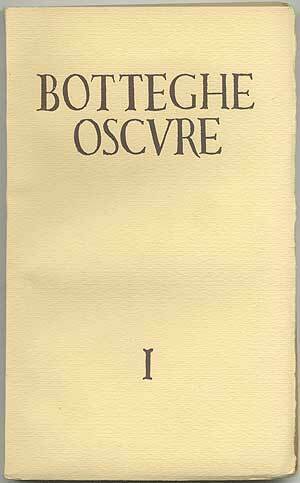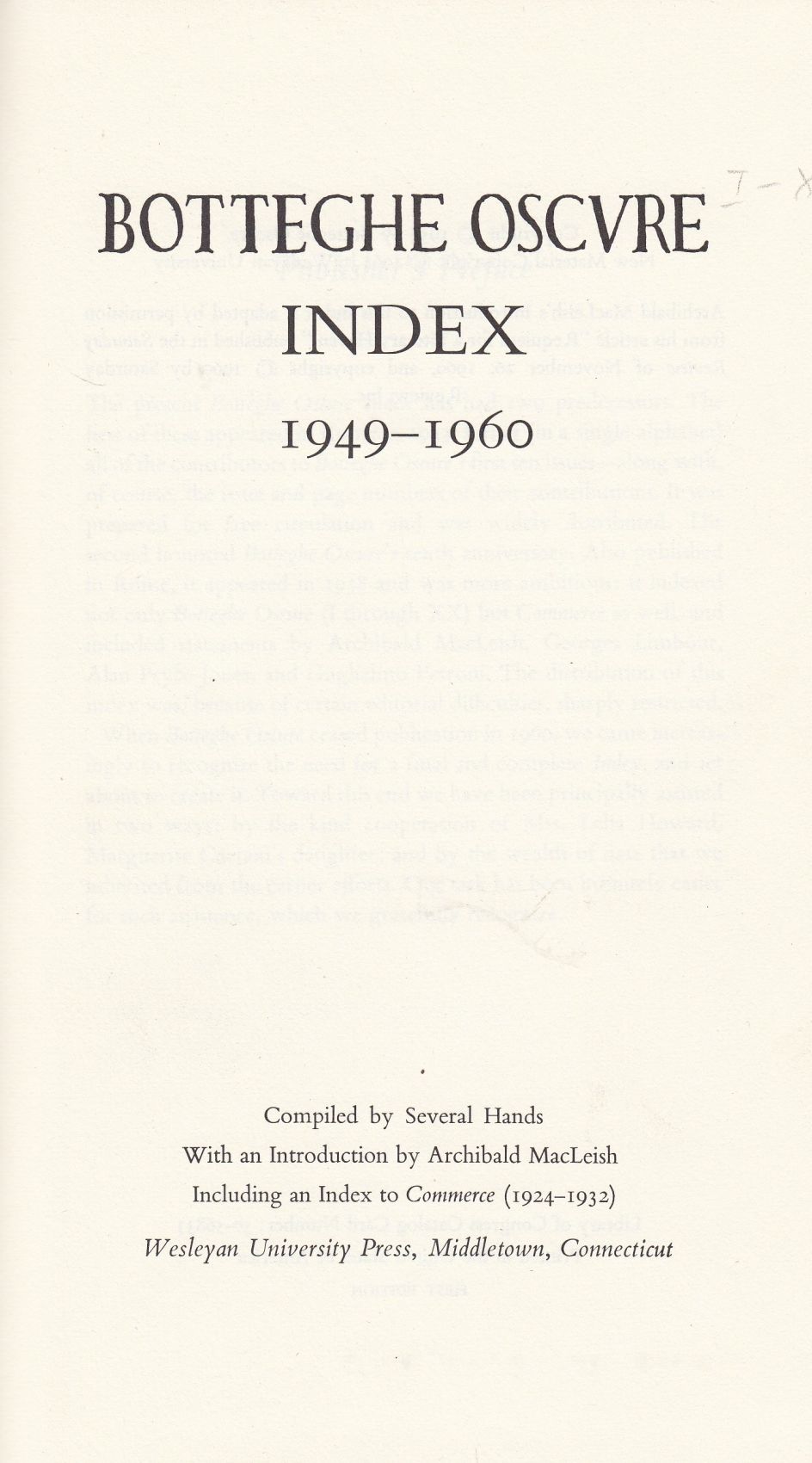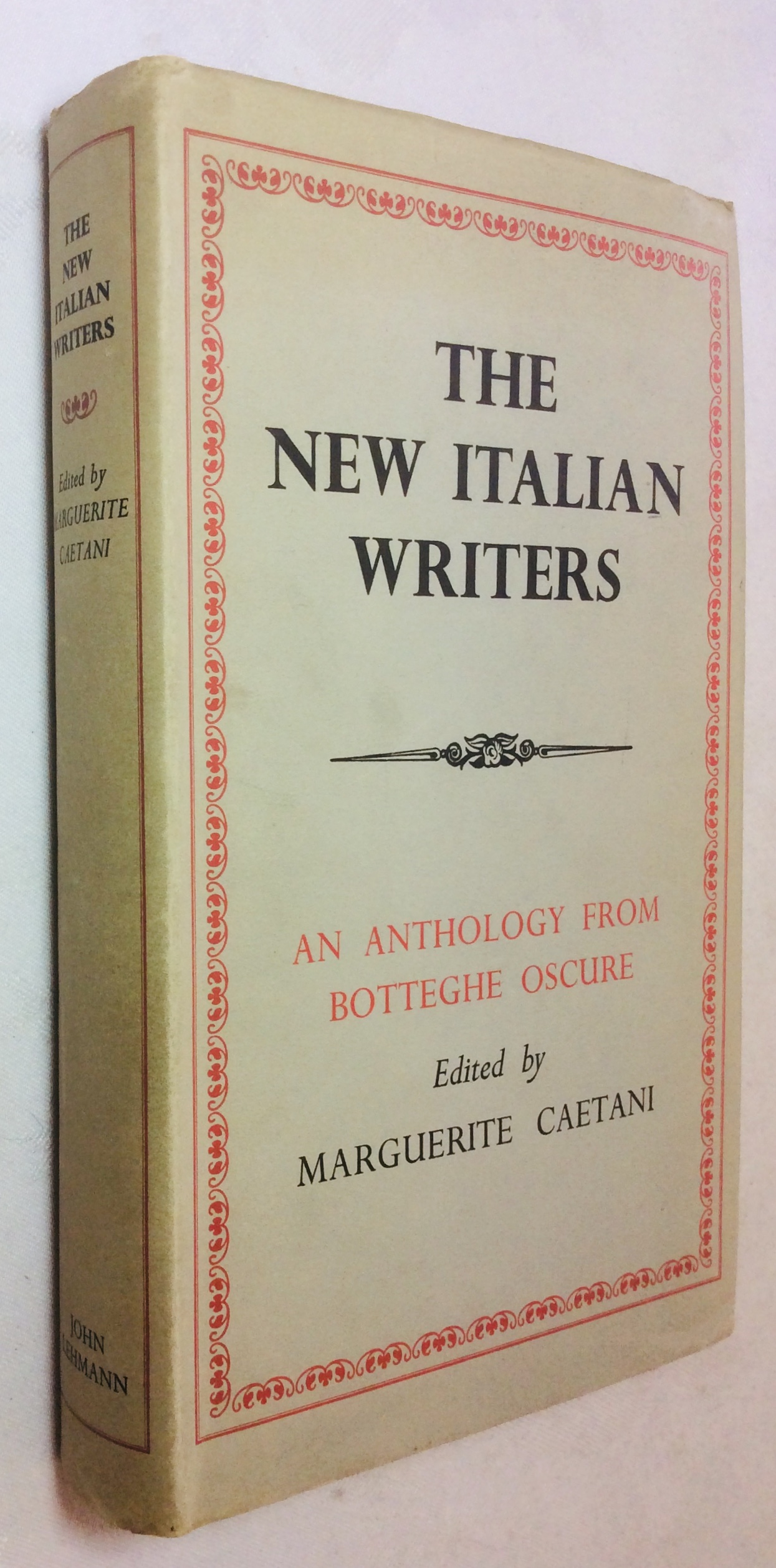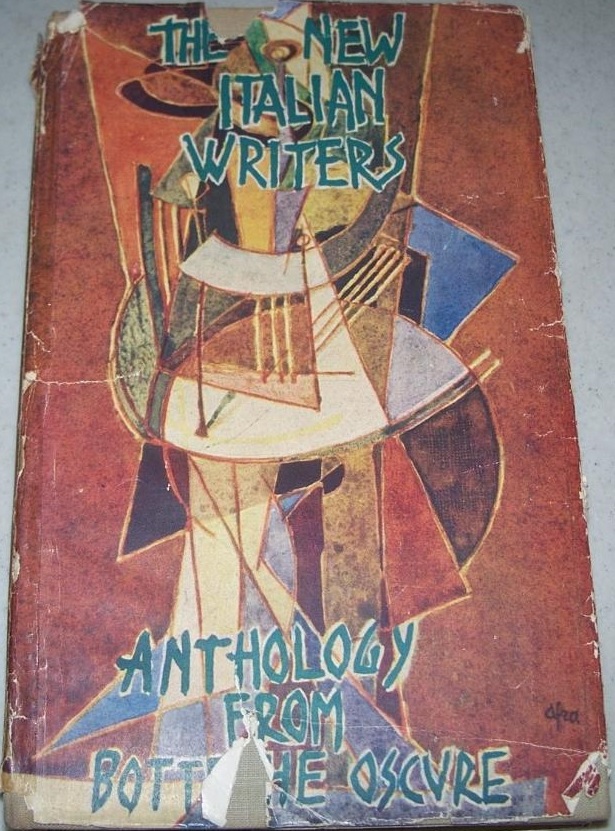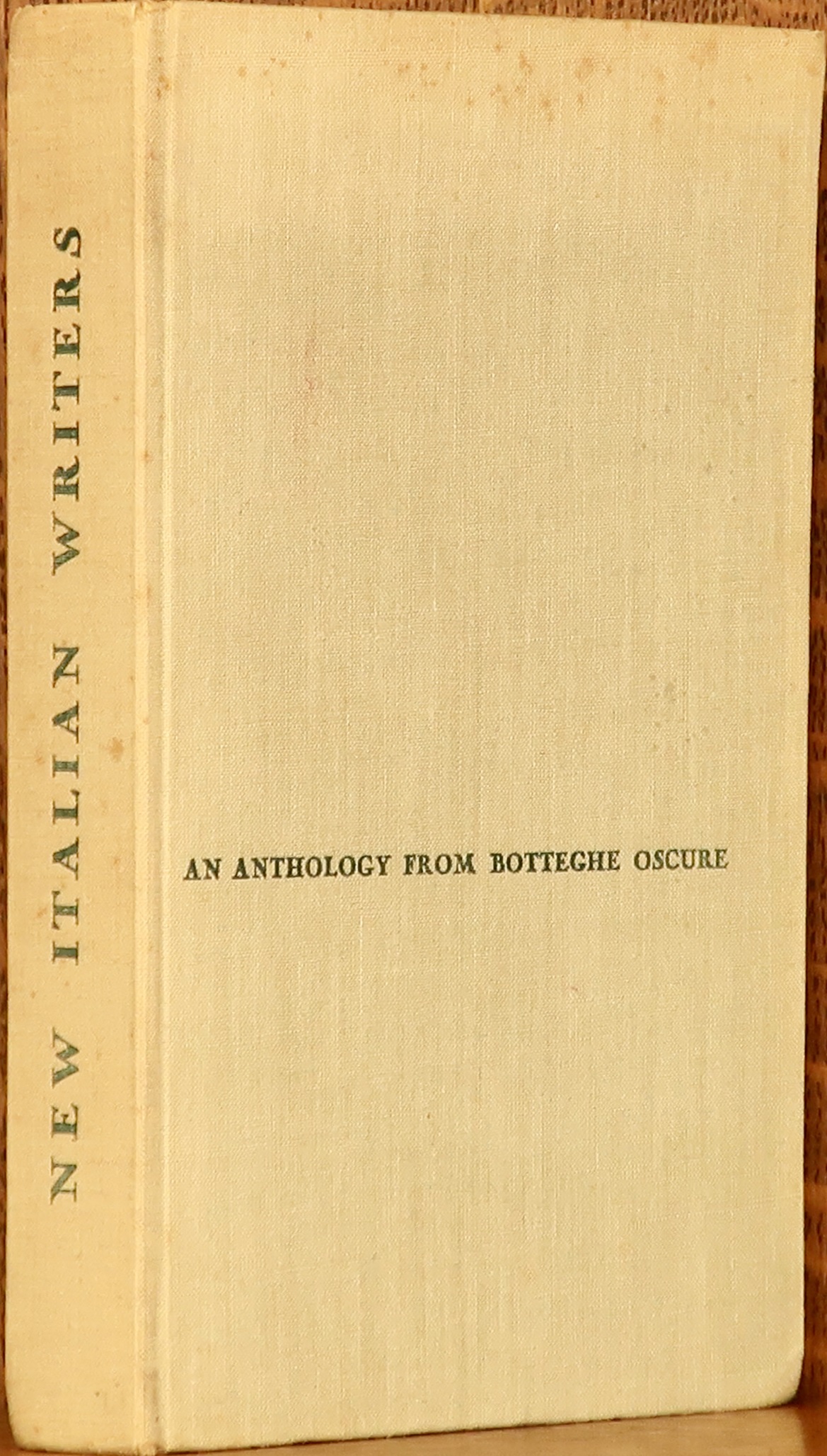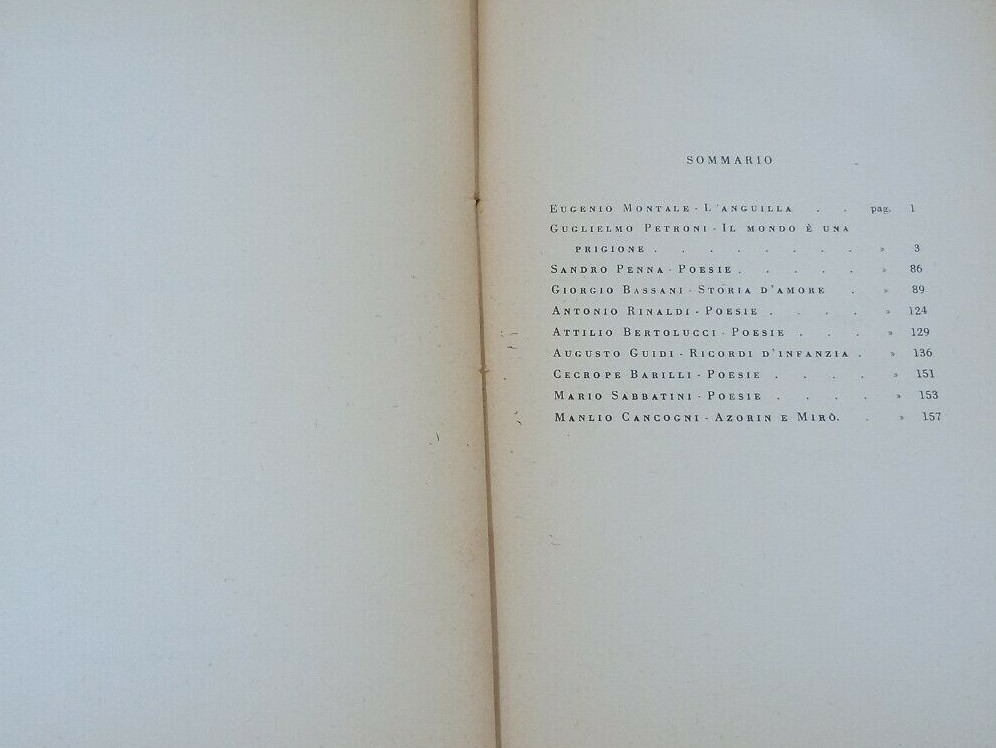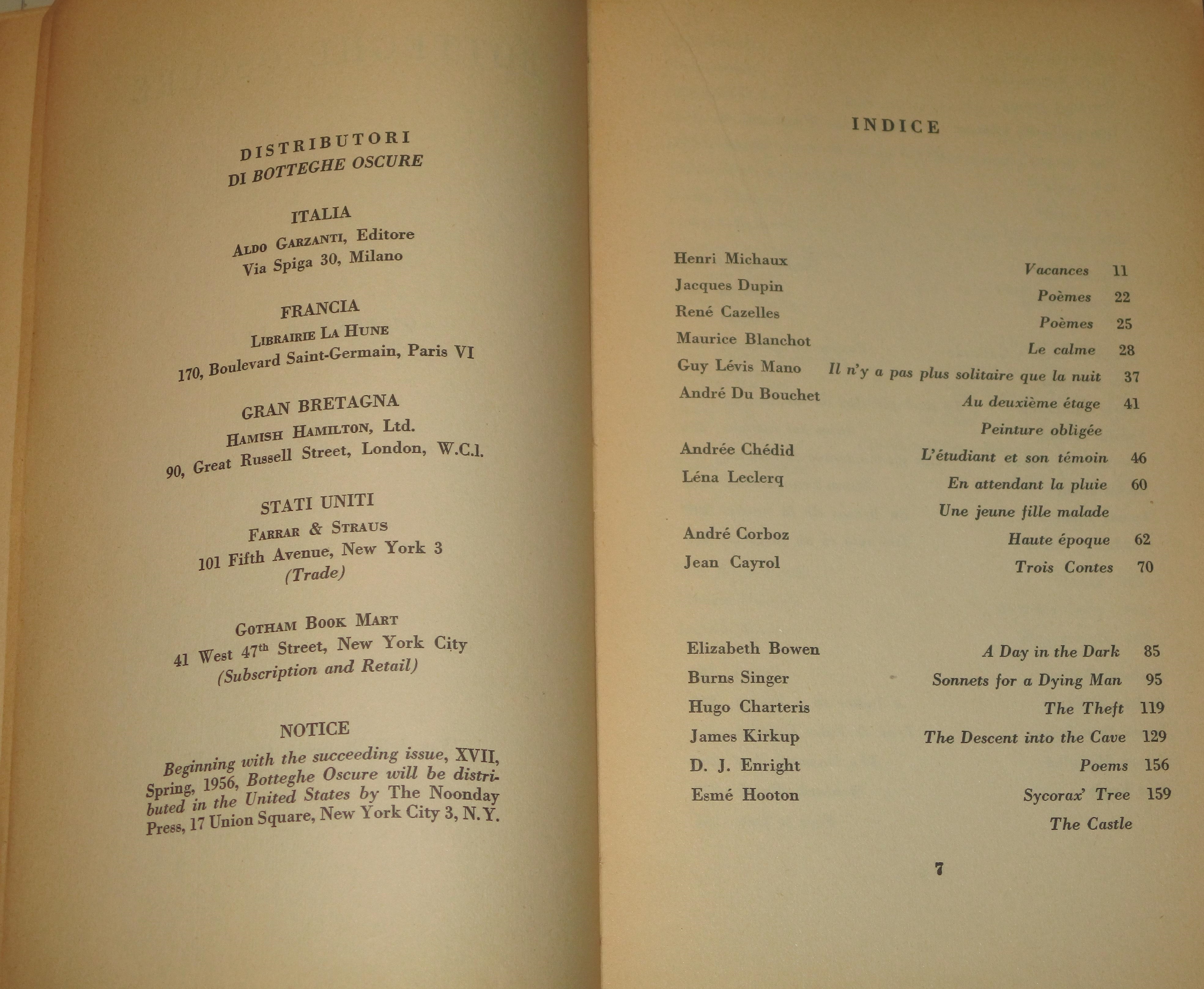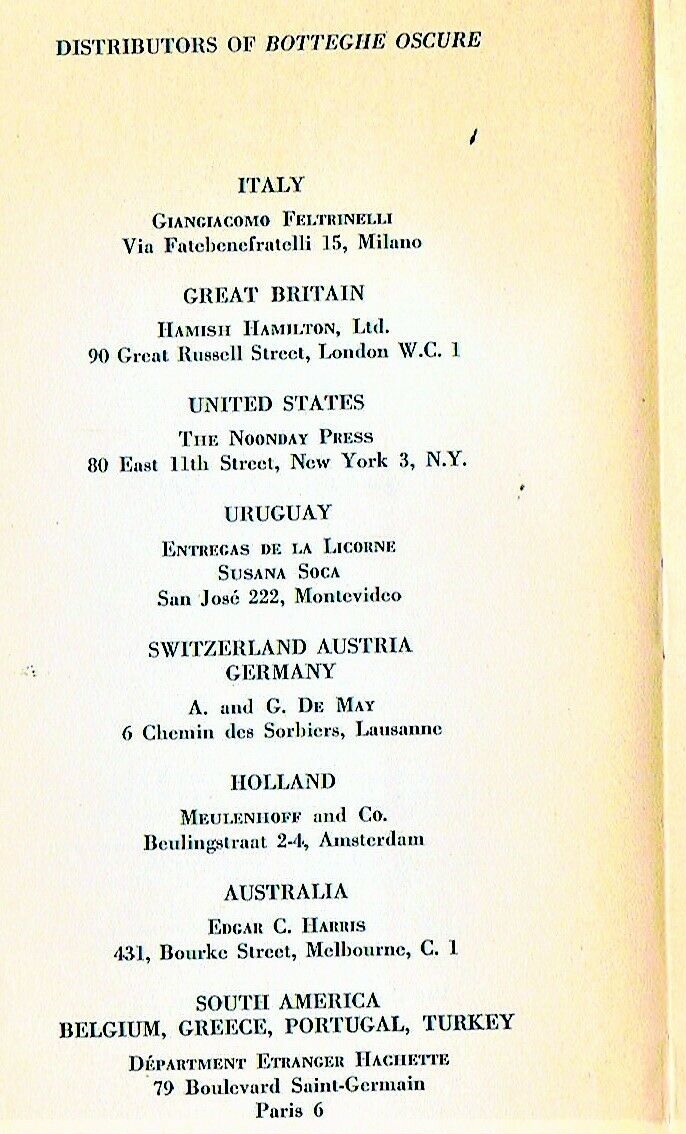1948-1960
Via delle Botteghe Oscure 32, Rome
Marguerite Chapin Caetani
Editor, cultural promoter, patron of arts
Inspired by the cultural meetings held in Rome after the end of WWII, Marguerite Caetani created in 1948 the literary magazine Botteghe Oscure, on the example of Commerce, which she had founded in Paris before the war.
Except for the first one, devoted to Italian literature, the following issues present inedit works by Italian, anglophone, French, German, and Spanish authors, in the original language, resulting in an innovatively cosmopolitan review. Giorgio Bassani was in charge for the Italian sections. His and Caetani’s work helped Italian literature gain visibility in the literary field and renew ties with foreign literature. John L. Brown in Books Abroad would praise the periodical and its goals: “[Caetani] launched Botteghe Oscure, as means of bringing young Italian writing, long isolated by fascism, back into the stream of international literature. The review […] did this and much more.”
Botteghe Oscure gained credit in the English-speaking world following the print of New Italian Writers, edited in America by New Directions in 1950, but even though the anthology was favourably received, and despite Caetani’s ambitions, the distribution of Botteghe Oscure in the US faced some problems. In 1949, the magazine was available in New York (the Holliday Bookshop), Washington (Whyte’s Gallery), Cambridge (Foreign Books di Schoenhof), and Chicago (Red Door Bookshop). Hoping to favour its spread, Caetani charged Farrar, Straus & Young with its distribution (from Quad. X, 1952 to Quad. XV, 1955, then from Quad. XVII for the paperback Noonday Press format), but the results did not meet the expectations. Hence, Caetani entrusted the last two issues to the newly established Wesleyan University Press, who would later edit Botteghe Oscure Index in 1964. In 1956, Caetani’s attempt at promoting the periodical through the U.S. Information Service turned out to be unsuccessful.
Despite the difficulties, Botteghe Oscure gained a solid group of readers: in the mid-fifties university and public libraries in fifteen States, publishing houses and magazines, such as Time and The New Yorker, schools, bookshops, and libraries throughout the country were subscribers. The merit largely goes to the collaboration started in 1950 with Gotham Book Mart, Frances Steloff’s bookshop in New York. After only two years, circulation rose from a few dozens to over a thousand copies. Moreover, Caetani relied on a network of American acquaintances and contributors who helped her in the promotion of the periodical. The magazine’s reception and spread in the States is hinted at by the reviews and articles that appeared, for instance, on The New Yorker, Time, and Vogue just to mention some.
During its thirteen years of activity, interrupted in 1960, Botteghe Oscure played a key role in the international cultural scene, giving many young artists the chance to make themselves known and get in touch with American and English publishing companies, for instance Knopf. The variety of the texts signaled the cultural energy marking post-war Italy. “Valentino” by Natalia Ginzburg, “Le ragazze di Sanfrediano'' by Vasco Pratolini, and “La casa di via Valadier” by Carlo Cassola are among the writings that found the favour of American readers. Thanks to Botteghe Oscure, Petroni and Tomasi di Lampedusa's works started circulating in the literary world, the latter after posthumous publication of the first chapter of the novel The Leopard (Quad. XXI, 1958). In the poetic field, Giorgio Caproni, Carlo Levi, Umberto Saba e Pasolini got critical recognition. Bassani’s work was equally appreciated. Ungaretti, who had been Caetani’s close collaborator for the Italian section of Commerce, did not appear in any of the issues, most likely due to the spirit of renewal which marked Botteghe Oscure and its refusal of hermeticism, which had dominated Italian poetry during the war.
Related Vectors
Pier Paolo Pasolini
Writer, director, actor, painter
An Anthology of New Italian Writers
Literary anthology
Marguerite Chapin Caetani
Editor, cultural promoter, patron of arts
Antonio Barolini
Writer, poet, journalist
New Directions in Prose and Poetry
Literary anthology
Giuseppe Ungaretti
Poet, Writer, Translator
Documents
Sources
Aiello, Azzurra. "La Rivista Letteraria Botteghe Oscure." Bachelor's degree dissertation in Storia della Critica Letteraria Italiana, Università degli studi di Roma "La Sapienza", 1999.
AME Historical Archive, fasc. Caetani Marguerite. Arnoldo and Alberto Mondadori Foundation (FAAM), Milan.
Barolini, Helen. “The Shadowy Lady of the Street of Dark Shops.” The Virginia Quarterly Review, vol. 74, no. 2, (Spring, 1998): 297-313.
Time. "Books: Highbrow Refuge. Botteghe Oscure, Vol. XII." March 8, 1954. http://content.time.com/time/subscriber/article/0,33009,889944,00.html
Brown, John L. "Reviewed Work: Botteghe Oscure Reader by George Garrett, Katherine Garrison Biddle". Books Abroad, vol. 49, no. 1 (Winter, 1975): 191.
Caetani, Marguerite ed. An Anthology of New Italian Writers. Edited by Marguerite Caetani and selected from the pages of the review Botteghe Oscure. Westport, Connecticut: Greenwood Press Publishers, 1970. First edition by New Directions, 1950.
Garboli, Cesare. "Il grande segreto di Tucci." La Repubblica, February 5, 2000.
Healey, Robin. Italian Literature since 1900 in English Translation: An Annotated Bibliography, 1929-2016. Toronto: University of Toronto Press, 2019.
Salvagni, Lorenzo M. "In the Garden of Letters: Marguerite Caetani and the International Literary Review Botteghe Oscure." Doctor of Philosophy dissertation, University of North Carolina at Chapel Hill, 2013.
Tortora, Massimiliano. "La letteratura italiana in 'Botteghe Oscure. International Review of New Literature'." In Gli intellettuali italiani in Europa (1903-1956), Petroni, Franco and Massimiliano Tortora, cur., 433-454. San Cesario di Lecce: Piero Manni, 2007.
Tortora, Massimiliano. "Botteghe Oscure e la ‘repubblica delle lettere’." Italian Studies, vol. 73, no. 2 (2018): 168-180.
Valli, Stefania ed. La rivista Botteghe oscure e Marguerite Caetani. La corrispondenza con gli autori italiani, 1948-1960. Rome: L'Erma di Bretschneider, 1999.


